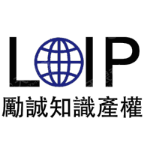

After our client filed an infringement dispute lawsuit against a certain Da Company, the said Da Company filed multiple invalidation requests against the involved patent. Our client entrusted us to fully respond to the multiple invalidation attempts by the said Da Company.
After successfully responding to the second invalidation and maintaining the validity of the patent right, recently we received Invalidation Review Decision No. 580487 issued by the State Intellectual Property Office in response to the third invalidation. Once again, we maintained the validity of the involved claims, escorting the infringement litigation.
Case Introduction
In this case, the said Da Company submitted a total of 26 pieces of evidence, forming two sets of evidence combinations, attempting to invalidate the involved patent on the grounds of Paragraphs 3 and 4 of Article 26 of the Patent Law, Paragraph 2 of Article 20 of the Implementing Rules of the Patent Law, and Paragraph 3 of Article 22 of the Patent Law. During the cross-examination in the court trial, Tongda Company abandoned the use of Evidence 21-25 and clearly stated that Evidence 9 and 11 would not be used as evidence.
In this invalidation procedure, the closest existing technology in the first set of invalidation evidence combination is the priority document of the involved patent. Therefore, for the first set of invalidation evidence combination, the core issue is whether the involved patent can enjoy the priority of Evidence 1.
When arguing for the establishment of priority, our company mutually confirmed from multiple aspects such as the background technology, specific implementation methods and drawings of Evidence 1, clarified that the claim scheme was fully disclosed in Evidence 1, and could claim the priority of Evidence 1. Finally, our argument was recognized by the collegial panel, and the priority of the involved claims was confirmed.
In the second set of invalidation evidence combination, Evidence 12 (CN101667759A) as the closest existing technology, its main purpose is to suppress the generation of sealing resin flash, and its main technical means is to cover the magnet and rotor core with a whole layer of resin, which is significantly different from the technical problem solved by the involved patent and the technical scheme adopted, and there are many distinguishing technical features; moreover, the combined Evidence 17 does not disclose the distinguishing technical features, and there is no evidence to prove that the distinguishing technical features are common general knowledge in the field. Therefore, Claim 1 has partial inventiveness compared with Evidence 12, Evidence 17 and common general knowledge.
Key Points of Judgment
If a person skilled in the art believes that the technical solution of a later application cannot be directly and unambiguously derived from an earlier application, the earlier application cannot be used as the basis for the later application to claim priority. Conversely, if the technical solution can be directly and unambiguously derived from the earlier application, the earlier application can be used as the basis for the later application to claim priority, that is, the priority is established.
If the priority of the technical solution defined by a claim is not established, the earlier application published before its filing date can be used as the existing technology to evaluate the inventiveness of the technical solution.
Typical Significance
In the initial stage of patent application, reasonable layout of priority strategy is particularly important. This strategy can not only effectively protect technological innovation achievements, prevent imitation and surpassing by competitors, but also provide more solid legal protection for technological innovators by extending the patent protection period. By accurately grasping the timing and scope of priority applications, enterprises or individuals can ensure that their innovative achievements enjoy exclusive rights for a longer period of time, thereby stimulating more R&D investment and technological innovation vitality.
Annex (Demonstration of the involved patent invalidation court trial):